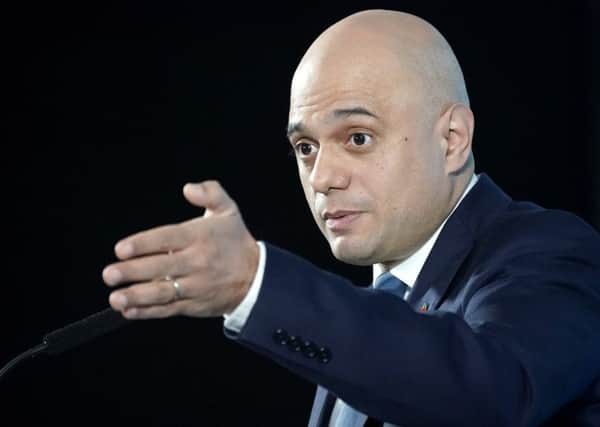Bill Jamieson: Parallel universe of election promises hurtling off the rails


Last week Labour unveiled plans for an £83bn spending spree with huge increases in Whitehall budgets. There’s to be a five per cent pay rise for all 5.4 million public sector workers, £75bn to be spent on 150,000 new council and social homes, £13.6 bn on higher education spending including scrapping student loans, £6.9bn on health spending including free prescriptions, £10.8bn on social care spending, and a far-reaching nationalisation programme for energy companies, utilities and the Post Office.
It’s a struggle to keep up. The Resolution Foundation calculates that by the end of five years, total managed expenditure under Labour will rise from 39.7 per cent of the economy to 45.1 per cent, taking us back to levels not seen since the 1970s.
Advertisement
Hide AdAdvertisement
Hide AdScotland is set to enjoy a spending blitz. Labour says it will invest £100bn here over a ten-year period. Shadow chancellor John McDonnell’s previous pledge of £70bn has just been hiked by £30bn. The manifesto included other plans for a “green industrial revolution”, with “radical” environmental polices such as £6bn for retrofitting houses in Scotland with measures such as insulation to make them greener.
Chasing up fast are the spending pledges of the Liberal Democrats and the Greens, while the Conservatives have trailed a dramatic end to austerity and major spending boosts of their own. Chancellor Sajid Javid has already announced the biggest increase in day-to-day spending in 15 years.
Keep up at the back! And if we feel the craziest campaign in living memory is not transformative enough, there’s still another three weeks of morning press conferences and photo ops to go.
Throughout all this we have been constantly assured that such spending can be afforded, that government borrowing is low and that debt will be kept within limits.
Yet alongside all this, there is another, less frenetically reported world – a parallel universe in stark contrast to that being covered hourly by broadcast media.
Last week the Office for National Statistics reported that, even before this spending tsunami is unleashed, government borrowing last month rose to its highest level in five years. The figure hit £11.2bn, much higher than economists had expected and some £2.3bn more than last year.
Total borrowing so far this financial year is £46.3bn, more than 10 per cent higher than the same time in 2018. The rise in borrowing in recent months risks wiping out the surplus on the current (day-to-day) account which was £5bn last year. Balancing the books on that score will mean taxes will have to be raised or spending cut to offset any giveaways. Debt, meanwhile, has climbed by £32.1bn to £1,798bn or 80.4 per cent of gross domestic product.
James Smith, Resolution Foundation research director, says the deterioration “should be a reminder to whoever wins the election that the state of the public finances will continue to be a constraint on plans for higher public service spending or tax cuts in the next parliament”.
Advertisement
Hide AdAdvertisement
Hide AdThis was not the only storm cone over the UK to be raised this month. From ratings agency Moody’s came a warning that the UK’s credit rating could be downgraded. It has changed the outlook on the UK’s current rating – a marker of how likely it is to pay back its debts – from “stable” to “negative”. Moody’s also criticised the general election promises to raise spending with “no clear plan” to finance it. The agency stripped Britain of its top-notch AAA rating in 2013, before downgrading it again in 2017.
After the failure of the rating agencies to forewarn of the global financial crisis in 2008-09, many may view subsequent downgrades as an over-reaction to make up for previous shortcomings, and can thus to some degree be discounted. But the warning from Moody’s can also be seen as a measure of international debt investors’ concern that the UK, in the wake of the vast spending plans announced in the past few weeks, now looks a higher risk prospect.
Never mind. A post-election fillip with Brexit resolved should see an economic bounce. But here, too, an alternative universe can be discerned. Latest “flash” purchasing managers’ surveys for the UK manufacturing and services sectors show output contracted at the fastest rate for 40 months in November. The dominant services sector recorded its worst performance for 40 months with a clear drop in output. Additionally, manufacturing activity contracted at a deeper rate in November.
The surveys, says the EY Item Club, “do little to inspire confidence over fourth quarter growth prospects. Our current expectation is that GDP growth will be limited to just 0.2 per cent quarter-on-quarter and the risks to this outlook currently look slanted to the downside… There is very little – if anything – in the survey on which to pin hopes for a pick-up in activity in the near term at least”.
Overall new orders contracted for a fourth month running in November and at the fastest rate since July 2016, with domestic and foreign demand both soft. Backlogs of work were run down at the fastest rate for over seven years. The surveys also added to the evidence that the UK labour market is now softening in the face of a myriad of uncertainties (Brexit, domestic political, global economic) and a soft UK economy. Overall employment fell in the manufacturing and services sectors for a third month running in November, albeit marginally.
Who can blame politicians for seeking to lift our eyes and inspire us with hope for a better future? But today there is a huge gulf between the visions of vast spending rises bringing economic transformation and a more realistic assessment of what lies beyond 12 December. There is a fair aspiration for improvement and uplift. But the election parallel universe is something else – and at this rate it is hurtling off the rails.